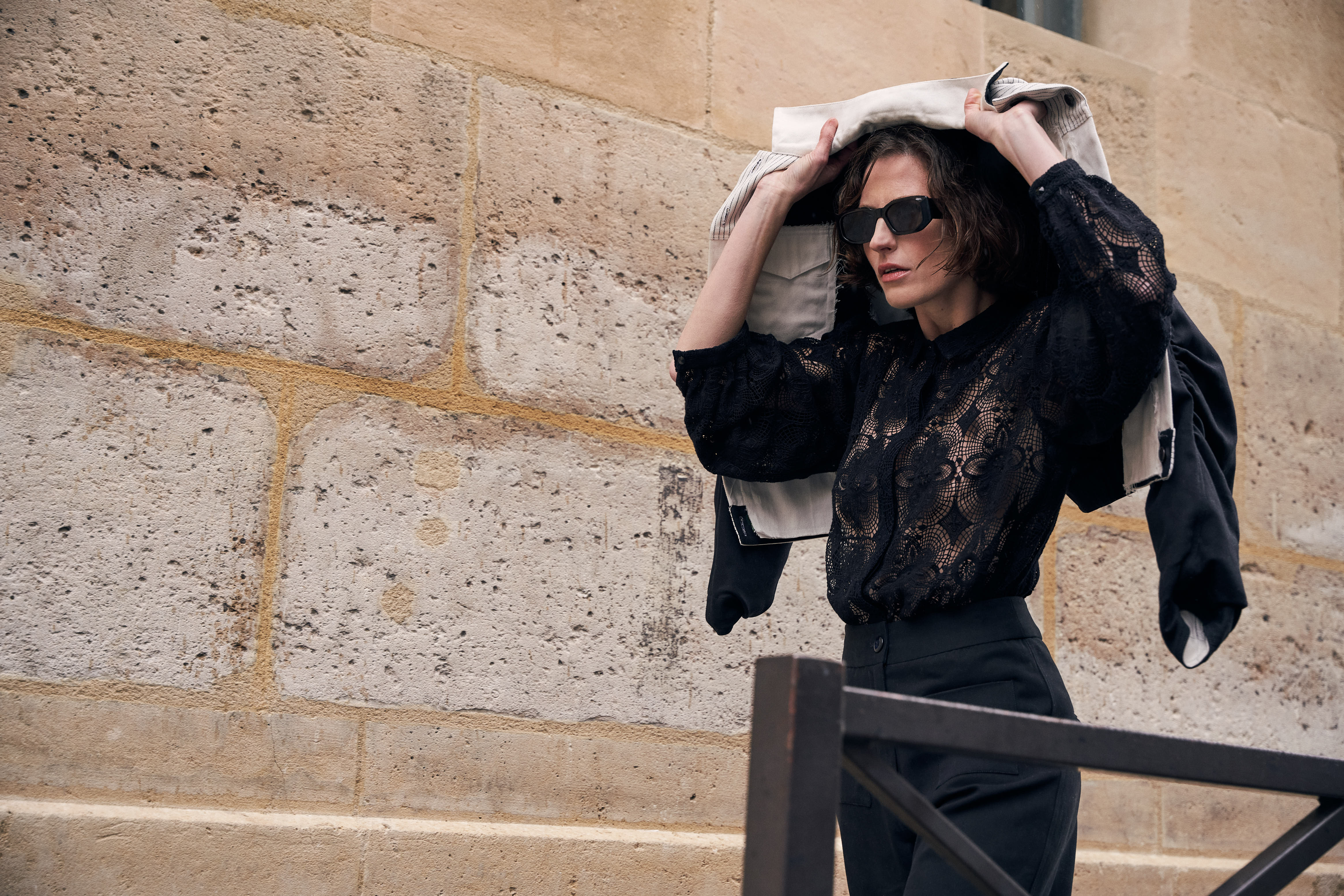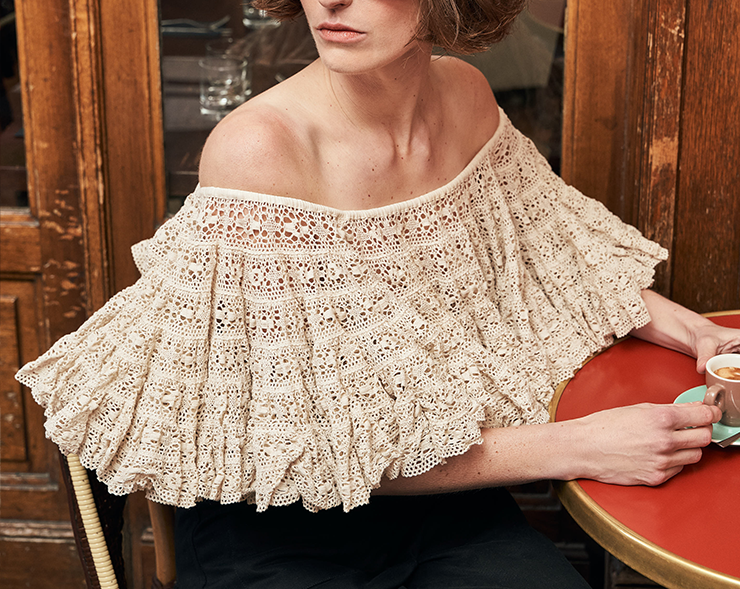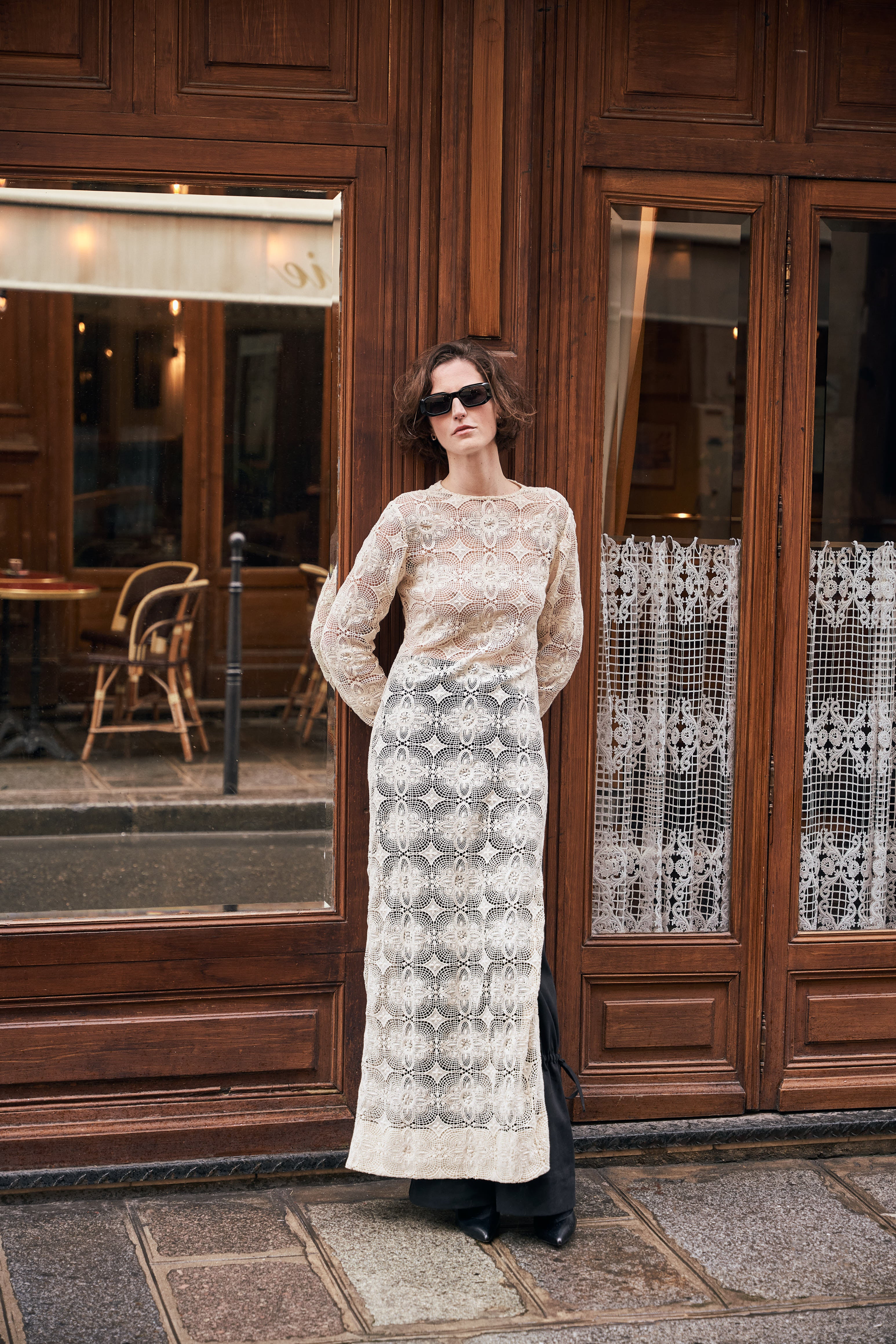
Strange things are afoot in Kamel Mennour’s gallery. Step into the gallery and a silent but very busy world is mysteriously unfolding in small black square boxes pinned to the walls. Go a few steps downstairs and an immobile but very alive scene is awaiting you: Snails crawl on the walls leaving a trace of slime behind them, dogs are either sleeping or on high alert, black birds are perched on the walls while rats are observing the scene from a safe distance.

Going through the gallery space is like stepping into a dream. We see things, but we can feel something else is happening that we don’t have access to. It’s unsettling and vaguely threatening. The new exhibition, aptly called PREY, is the work of the young New York based artist Elizabeth Jaeger. We could just as well be the preys.

At first, as we enter, we just see the small square black boxes hanging on the wall. Inside, they are teeming with silent life. At first we don’t see much, but as we observe and our eyes get accustomed to darkness, we see a mysterious parallel universe. A group of people, arms folded across their chest, could be listening to a talk. Or they could be the ones waiting for the answers from the lonely figure on its knees who seems to be praying or imploring. A man is bowing in front of a woman holding something in her arms. It could be the waiting room of a hospital and the woman is announcing sad news to the tall man. A dog is sitting next to him. He has baggy jeans. Is he a teenager? Someone in the background is sitting and distractedly ready a magazine, like in a waiting room. Light comes from above and sideways. Is it a prison ? A man is slouched in an armchair; a woman seems to be resting by the side of a swimming pool, but the lower part of her body is hanging in the air as if she were dangerously about to fall, but she seemed not to be concerned.
It’s a deeply troubling world we are looking at without being about to have access to it as if we were witnessing a scene behind a thick glass and could not hear what was being said and understand the situations. Miniatures have the capacity to interrupt our perception of time and space. “In its tableau-like form,” writes Susan Stuart in the introduction to the show, “the miniature world is a world of arrested time. Its stillness emphasized activity that is outside its borders. And this effect is reciprocal, for once we attend to the miniature world, the outside world stops and is lost to us.” Viewing these collective moments reproduce the experience of intimacy at a distance that is the hallmark of city dwelling,” notes Marie Catalano in her introduction to PREY.

Climb down a few steps and you are entering a different world. This time, humans have made way for animals and miniature is being replaced by lifesize. It’s no longer small black boxes teeming with impenetrable life, but animals watching each other and watching us, in a space, with its reeds, looking like a marsh. We usually feel that animals and insects live in our world. In this installation, Elizabeth Jaeger makes us understand that it’s not “our” world, but that we live in their world. It is a very eerie feeling. We can acutely feel we are stepping into the world of snails and dogs and rats and birds. “The fly, the dragonfly and the bee that we observe flying next to us on a sunny day do no move in the same world as the one in which we observe them, nor do they share with us - or with each other - the same time and space,” has suggested Giorgia Agamben, the Italian philosopher. As Marie Catalano observes in the introduction to the exhibition, “the dual environments that make up Prey allow us to imagine a world where humans are no longer observers at the center of the universe, but rather interdependent within an ecology of living beings who watch us back.” It is a salutary - and troubling - experience.


We spoke with Elizabeth back in New York after her opening at Kamel Mennour’s. Here’s our conversation.
Sonam Khetan Looking at your work and your Instagram, I feel your work until now has been primarily concerned with the human body. Is that a correct assumption? And can you explain your interest in it as an artist?
Elizabeth Jaeger The figure has always interested me in its capacity to emote, give gestures, speak towards something abstract while being intrinsically embodied. In some ways I am not interested in the body itself, but rather everything that surrounds it: the implied movement, emotion, sense of time, the feel of outside relationships (in the gesture or the gaze) all that comes with figuration. The work I’ve made with animals has this same premise: the birds, dogs, rats all gaze outwards implying a world around them. When the viewer meets their gaze, it momentarily creates a shared world, a simultaneously real and imagined world.
SK Your show at Kamel Mennour's gallery deals in part with the natural world. Is that new to you ? What did you want to say with this powerful (and beautiful) piece?
EJ “Setting” is new to me - it’s my first time giving the work a sense of surroundings, this time a marsh, a forest, or a swamp. My prior exhibitions were more steeped in the idea of the gallery as a liminal space that could be anywhere. With the show at Mennour I wanted to give the context that the viewer has found themselves in a “natural” albeit otherworldly environment. This room was made with the intention to remove the human from the center of the universe and to give a sense that the viewer was interrupting a world functioning on its own. This was very much my own experience having recently traveled into a remote first growth forest, and I wanted to capture this feeling of sublimity, intensity, complexity, interrelation, envelopment that I experienced myself.

SK How should we interpret and understand the scenes in the black boxes on the wall? Were you inspired by something in particular?
EJ Thank you for asking. The upstairs room was made to be in stark contrast to the downstairs environment and it can feel jarring. I was thinking a lot about contemporary city architecture (especially in NYC where I live.) - big loft buildings where one’s domestic life is on display for the street, a kind of public performance of intimacy. I enjoy walking around at night and catching accidental glimpses - absorbing the multiplicity of life dramas unfolding in parallel time - and it also makes me feel deep emotion for the loneliness of city living: everyone in their separate apartment boxes, living their often solitary lives. Whereas the downstairs of Mennour feels enveloping and chaotic, the upstairs was searching to feel isolated and regulated. The walls of the gallery are to act like a city block of windows, each with a separate narrative and dramas.
SK For the black box piece, do you first write like a storyboard, like a movie director might do? Can you share a little bit about your process?
EJ The storyboard is truly fleshed out in clay. I start with the architecture of each metal box (each one has different repeating cut outs making different suggestions of spaces) as a kind of stage. From there I imagine a figure who could inhabit that space. To make the “actors”, I am working with my fingers, dental tools and needles - so whereas I start with an intention, the outcome of the figure is a back and forth relationship with the material. I start with the head and face, and often I am led to a figure I couldn’t have anticipated but brings something special to the architecture- a face that looks either younger, older, sadder, happier or more spiteful than I intended. From their gaze, I decide their gesture and what clothes they might wear, what they could be sitting on, and so on. I like to think of this as a kind of eavesdropping - I don’t need to know exactly who these figures are to have a sense of them, and a sense of what the scene could be emoting. For the boxes without figures, I came to a place where I realized “the actors” could be anything, furniture, a forgotten toy, a fish, a plant - every object has a universe around it.
SK What have been the most important influences on your work as an artist?
EJ The word “simultaneous” and the sense of how large and diverse and multifaceted the world is. Whether it's by physical (or social media-haha) travel, meeting another person with no shared spoken language but a deep mutual affinity, finding another artist’s work from a completely different time and/or place and really feeling like you understand it, or sharing an inexplicable meaningful moment with an animal - these give me hope of the possibility of real communication and love, and with that the possibility of peace.
Elizabeth Jaeger, Prey. Until February 15, 2024 at Kamel Mennour. 6 Rue du Pont de Lodi, 75006 Paris.






